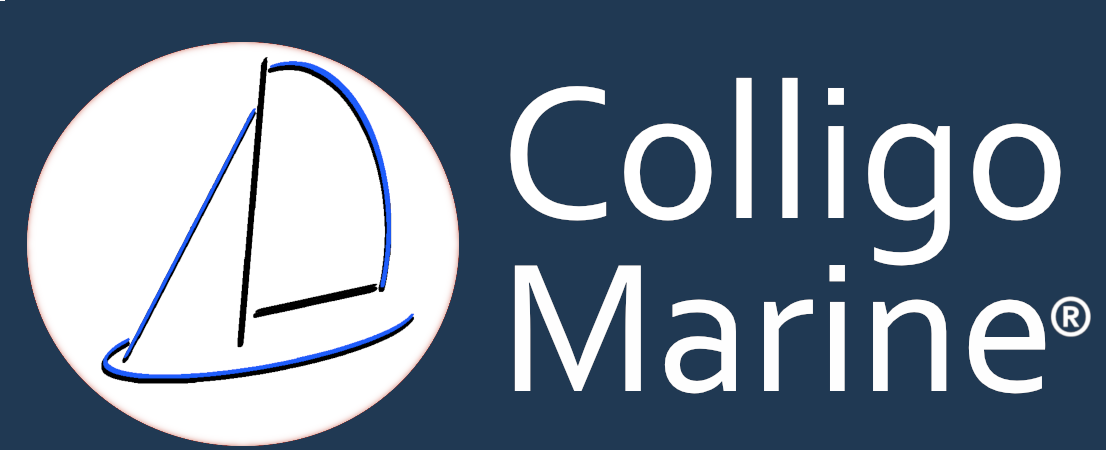Before Ordering Your Colligo Dux Rigging...
As of 2015, we exclusively use Heat Stretched Dyneema SK75 (Dynice Dux or its equivalent) for our Standing Rigging. This is because all the other Dyneema formulations, to date, have more overall stretch. The newer formulations of Dyneema do not heat stretch as well as SK75 and therefore result in more constructional stretch than heat stretched SK75 Dyneema.
Sizing your rigging.
Please contact us for any questions as we want to insure you have a great performing rig.
Size for stretch equivalent to what you have now. Click here for a printable PDF of the stretch chart. Do not put a line with more stretch in place of what you have now, regardless of how strong it is. Many people have mistakenly sized Dyneema for break strength and ended up with a very stretchy rig. This is why you hear some say it is too stretchy for standing rigging, when in fact they did not size it for equivalent stretch. Stretch is a function of cross sectional area, so all you need to do is pick the right diameter of dux for your application. Really, what you care about for your standing rigging is stretch, as long as it does not break.
Creep sizing.
Our creep target is less than 0.1” per year of creep. We use the static load or pre-tension that a rig sees as the load number to use for creep. Most sailboats sit upwards of 95% of their time so Dynamic loads are ignored, most of the time. This has proved successful as we have rigged more than 750 boats around the world at this time. If you have a boat that you feel will have more use and dynamic loads will be more significant, simply oversize the line to accommodate that usage. Use the printable creep table here for determining your creep loads and thus the line size you need based on creep.
Breaking strength.
If the stretch sizing is correct, then your rig should be 2-5 times stronger than steel in the same usage on your boat. Check this to be sure from the strength table here.
Post-stretching to reset the braid after splicing.
When heat stretched Dyneema is spliced, the braid is upset at the bury portion of the splice. This needs to be restretched before you put it on the boat so you do not experience any elongation of the line after installation. The re-stretch loads we use are as follows:
Line size / Minimum re-stretch load
7mm & 9mm / 2,000 lbs
11mm / 3,000 lbs
13mm / 4,000 lbs
16mm / 8,000 lbs
Choosing your tensioning system: Lashings or Turnbuckles?
Pretension of your rig is often overlooked and it is critical to the efficient function of your rig. The bigger the boat, the more pretension you will need in your standing rigging. Lashings look really cool but are limited in their ability to create tension. Boats equal to or larger than 30’ LOA with a fixed mast should use turnbuckles.
A rotating mast rig does not need as much pretension and can use lashings. We do have a temporary tensioning system for lashing tensioners that is both manual and hydraulic that we use mostly on bigger multihulls. See here for more details on it: lashing tensioner LINK.
ALWAYS match the pretension of the previous rig or the design spec for pretension to your new rig.
Lashing systems, in Summary (generally speaking):
Fixed masts boats over 30’ LOA should use turnbuckles. Smaller boats have the option of turnbuckles or lashings.
All rotating mast rigs can use lashings but more time is required to adjust the rigging. It can also be a challenge to tension a lashing rig on bigger boats. We do offer a tensioner for this. See here for more information: LINK. Running backstays are a good consideration for all rotating mast boats to help with forestay tension.
Lashings: All boats with lashings will take more time to set the rig up - turnbuckles are quicker for sure. If you are making your own rigging then lashings offer you some leeway in terms of shroud length, whereas a turnbuckle has limited travel so splicing more precisely is required. We always setup the lashing so the bitter end is point up to allow for the connection of a halyard for tensioning. However, it is always best to tension your rig while sailing. See Tuning a Colligo Dux Rig here. We usually make lashing lengths 8-14 inches long. Lashing to a turnbuckle using our male distributors often is a good option if the pin to pin length is not accurately known.
Turnbuckle Tensioners: Jaw to Jaw turnbuckles are needed. Pin size and jaw width need to be chosen carefully to fit the line terminators that you are using. The line needs to be spliced precisely as the turnbuckles do not have as much travel as the lashings. We always set the turnbuckle length 1” less than maximum for measuring purposes.

